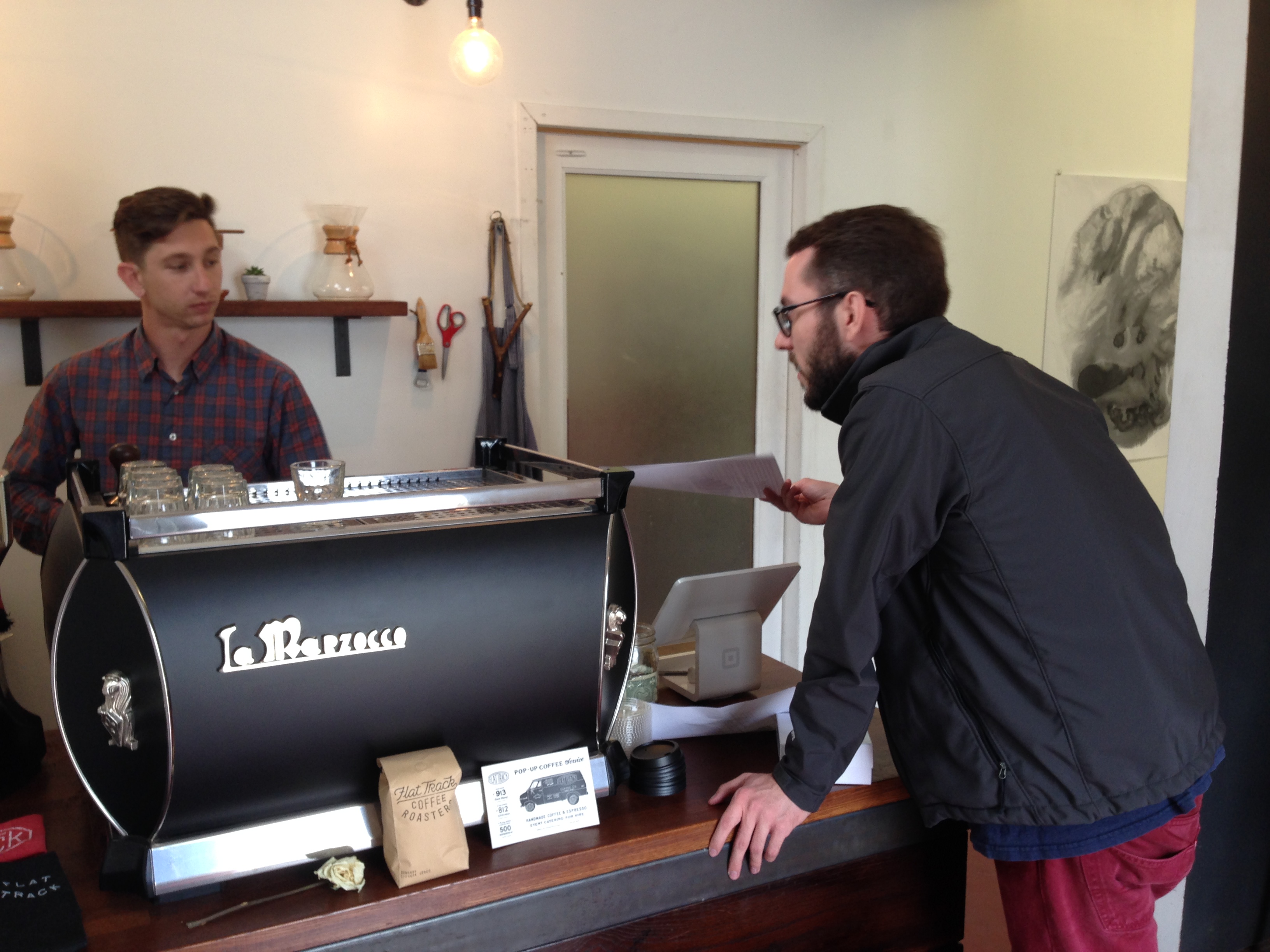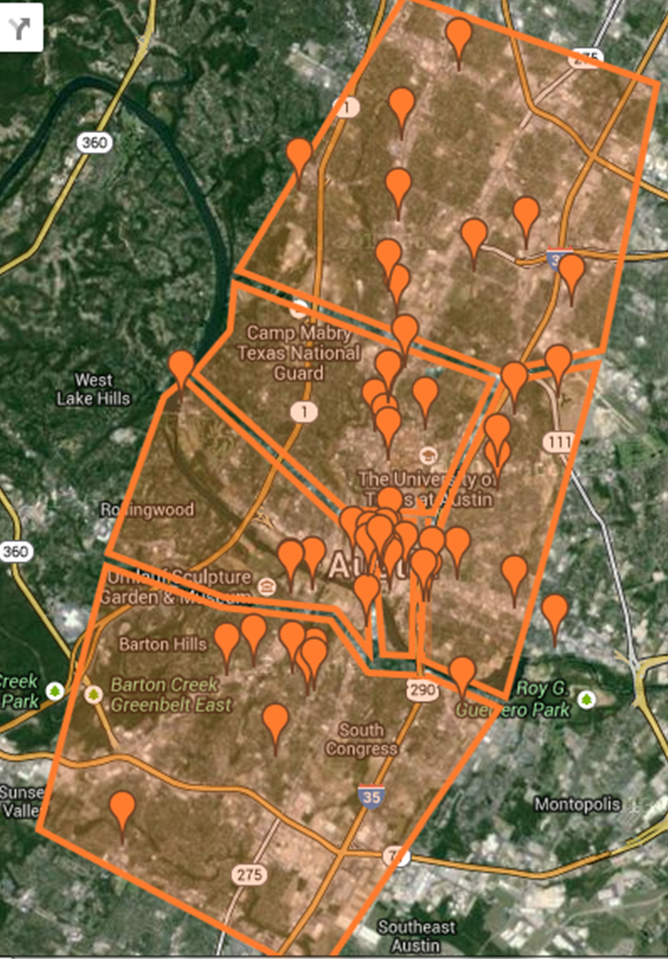Team:Austin Texas/human practices
From 2014.igem.org
(→Caffeinated Coli) |
(→Caffeinated Coli) |
||
| Line 72: | Line 72: | ||
[[file:Ellacollectscoffee.JPG|thumb|right| Ella collecting coffee sample from Austin Java]] | [[file:Ellacollectscoffee.JPG|thumb|right| Ella collecting coffee sample from Austin Java]] | ||
| - | In the spring of 2014, the UT Austin iGEM team was asked to create a presentation for the [http://sxsw.com/exhibitions/sxsw-create/participants-2014 South By Southwest (SXSW) 2014 Create event]. The SXSW festival is an annually held set of music, film and interactive events in Austin. The Create event was an interactive event that showcases up and coming maker/hacker/DIY culture. There were many relatively new team members, so the we saw this as an opportunity to not only teach the new members essential research techniques, but also to reach out to the community and raise awareness for the emerging field of synthetic biology. We decided to revive an old iGEM project, the [[file:Jordantalkscoffee.JPG|thumb|left| Jordan discussing our project with Matt Bolick, co-owner of Flat Track Coffee]][https://2012.igem.org/Team:Austin_Texas/Caffeinated_coli "Caffeinated coli,"] and thought it would be interesting to measure the caffeine content of various different local house coffees. The Austin Independent Business Alliances' slogan of [http://www.keepaustinweird.com "Keep Austin Weird,"] is a widely shared sentiment of Austinites, and emphasizes the need to promote local businesses. We thought it would be a great community outreach project to work with local vendors of Austin, and do our part to "Keep Austin Weird!" | + | In the spring of 2014, the UT Austin iGEM team was asked to create a presentation for the [http://sxsw.com/exhibitions/sxsw-create/participants-2014 South By Southwest (SXSW) 2014 Create event]. The SXSW festival is an annually held set of music, film and interactive events in Austin. The Create event was an interactive event that showcases up and coming maker/hacker/DIY culture. There were many relatively new team members, so the we saw this as an opportunity to not only teach the new members essential research techniques, but also to reach out to the community and raise awareness for the emerging field of synthetic biology. We decided to revive an old iGEM project, the [[file:Jordantalkscoffee.JPG|thumb|left| Jordan discussing our project with Matt Bolick, co-owner of Flat Track Coffee]][https://2012.igem.org/Team:Austin_Texas/Caffeinated_coli "Caffeinated coli,"] and thought it would be interesting to measure the caffeine content of various different local house coffees. The [http://www.ibuyaustin.com Austin Independent Business Alliances'] slogan of [http://www.keepaustinweird.com "Keep Austin Weird,"] is a widely shared sentiment of Austinites, and emphasizes the need to promote local businesses. We thought it would be a great community outreach project to work with local vendors of Austin, and do our part to "Keep Austin Weird!" |
Jordan, a senior member of the group, took charge and assembled a map of about 40 local coffee shops in Austin. The team took a Saturday and split up to visit dozens of coffee shops, collecting samples of their house coffee. We were met with much enthusiasm by the coffee shop owners and employees, who's interest had been peaked when we described our experiment. | Jordan, a senior member of the group, took charge and assembled a map of about 40 local coffee shops in Austin. The team took a Saturday and split up to visit dozens of coffee shops, collecting samples of their house coffee. We were met with much enthusiasm by the coffee shop owners and employees, who's interest had been peaked when we described our experiment. | ||
[[file:UT_Austin_Coffee_shops_map.png|200px|thumb|right| [http://www.google.com/maps/d/viewer?mid=zlUDhks6KHxI.ketDvlvg6zis Click here for an interactive map of coffee shops we visited!]]] | [[file:UT_Austin_Coffee_shops_map.png|200px|thumb|right| [http://www.google.com/maps/d/viewer?mid=zlUDhks6KHxI.ketDvlvg6zis Click here for an interactive map of coffee shops we visited!]]] | ||
| - | Back at the lab, the team members got to work. Senior members divided their attention to mentor the new members in the techniques necessary to start cultures, | + | Back at the lab, the team members got to work. Senior members divided their attention to mentor the new members in the techniques necessary to start cultures, work with the lab equipment, and other general laboratory safety. |
| Line 84: | Line 84: | ||
[[file:UT_Austin_E._coli_coffee_cultures.jpg|300px|thumb|right| Cultures of knockout strain grown with collected coffee samples.]] | [[file:UT_Austin_E._coli_coffee_cultures.jpg|300px|thumb|right| Cultures of knockout strain grown with collected coffee samples.]] | ||
| - | The ''E. coli'' we used are a synthetic strain, previously made by the [https://2012.igem.org/Team:Austin_Texas 2012 UT Austin iGEM team]. This strain | + | The ''E. coli'' we used are a synthetic strain, previously made by the [https://2012.igem.org/Team:Austin_Texas 2012 UT Austin iGEM team]. This strain has had its normal guanine synthesis pathway knocked out, but contains a plasmid with a set of genes that enables the organism to synthesize guanine from xanthine and many of its derivatives, including caffeine. Without caffeine (or other xanthines), the strain cannot grow. When caffeine is added, the strain can demethylate the caffeine molecules (and other derivatives) to make guanine. It then grows normally until the caffeine is completely metabolized, at which point the cells can no longer synthesize guanine, and cease to grow. Thus, by looking at the relative growth of the strain with different samples of coffee and comparing it to a standard curve of growth in solutions with known amounts of caffeine, we could somewhat accurately measure the amount of caffeine in the coffee. |
| + | |||
| + | The protocol was simple: We provided our Caffeinated coli with a diluted sample of coffee we had acquired from the various shops, and then compared the relative growth rates by taking an OD600 value at a time point. | ||
| + | The results we found can be seen in Figure 1. below. | ||
| + | |||
[[file:UT_Austin_relative_caffeine_levels_coffee_shops.png|600px|center|left| Figure 1. Relative levels of caffeine in house coffee samples from around Austin.]] | [[file:UT_Austin_relative_caffeine_levels_coffee_shops.png|600px|center|left| Figure 1. Relative levels of caffeine in house coffee samples from around Austin.]] | ||
Revision as of 17:27, 15 October 2014
|
 "
"







